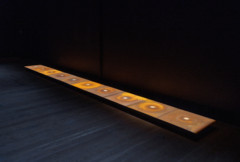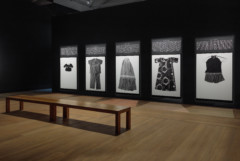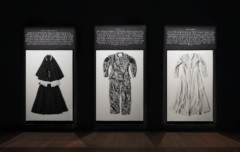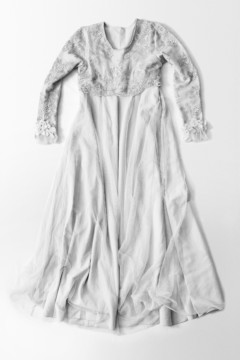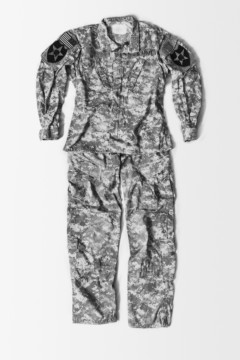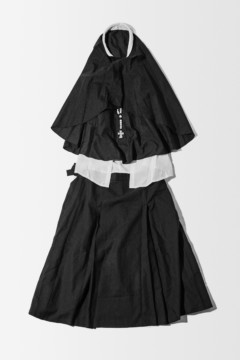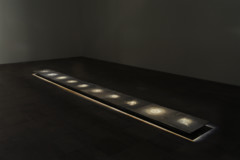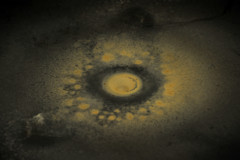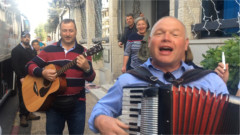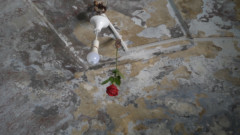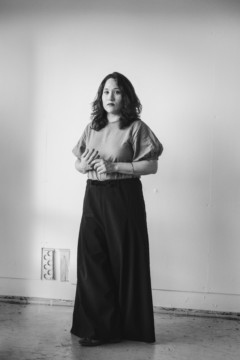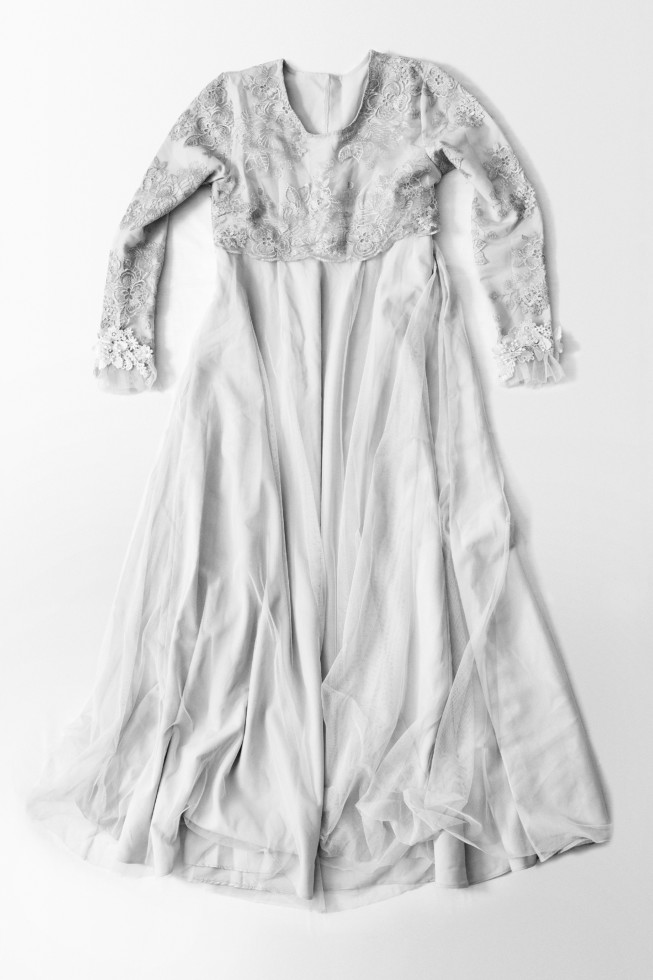
What Remains
Laia Abril meets Emily Jacir and Teresa Margolles
Stockholm, 6.9 2025 – 18.1 2026
Laia Abril’s photographic series “On Rape” (2022) is shown together with Teresa Margolles’ installation “Plancha”, originally from 2010, which here, in a new version, connects the violence in Mexico with the increasing shootings in Sweden and the Stockholm region in recent years. Emily Jacir’s 2019 film “letter to a friend” revolves around the conflict between Palestine and Israel, a work that is just as ferociously relevant today, six years after its creation.
Laia Abril and the history of sexual violence
Laia Abril (born 1986 in Barcelona) has a background in photojournalism but left her previous career for art.
If it is possible to ignore the title of the work, “On Rape”, then Laia Abril’s photographic series can be perceived as visually appealing at first glance, with items of clothing in eight large photographs. But when the visitor comes closer and reads the text for each image, horrific stories of sexual violence and other abuses unfold.
The clothes and objects worn by the victims have been taken from several different times and parts of the world – such as military uniforms from rape as a form of warfare, medieval iron gags that stopped women from speaking about things that were not desirable by society, a sheer white dress from kidnapping and assault before marriage, and a small school uniform after the rape of a girl at school.
The fact that the photo series “On Rape” is not immediately perceived as repulsive is a deliberate move by Laila Abril. The aim is for more people to be able to approach the images – and then the stories. In this way, she wants to create conversations.
“On Rape” (2022) is the second part of Laia Abril’s extensive project “A History of Misogyny”. The project – with topics such as abortion, mass hysteria, menstruation and femicide – is an investigation and mapping of societal and systematic oppression directed at women and girls.
Teresa Margolles on violent death in Stockholm
Teresa Margolles (born 1963 in Culicán) investigates the social and societal causes behind violent deaths. She points out how death reflects the life situation or the society around her. She is trained in communications and forensic science.
For the exhibition at Moderna Museet, Teresa Margolles has created a new version of the work “Plancha” – “Plancha (Estocolmo)/Hotplate (Stockholm)” (2010/2025) – in which she connects the violence in Mexico with the increasing spiral of violence in Sweden and the Stockholm region in recent years.
During the spring of 2025, she collected material from about twenty outdoor locations in the Stockholm area, where people were shot to death during the period January 2023 to May 2025. She has then mixed the material with water. In the exhibition room, the liquid drips slowly from the ceiling onto hotplates.
Each drop, perhaps each tear, makes a quiet but sizzling sound and evaporates. Over time, limescale deposits form on the plates – traces of what is no longer there.
The artist emphasises that the work is not about blaming, either victims or perpetrators. The subject is loss, both on an individual and collective level. The work becomes a kind of memorial to every person, place and neighbourhood affected by the deadly violence in the Stockholm area.
Emily Jacir about her home and street in Bethlehem
Emily Jacir (born 1970 in Bethlehem) grew up in Saudi Arabia, France, Italy and the USA. She lives in Bethlehem and Rome. The biographical information is an important starting point and a central theme in her art.
In the film “letter to a friend, Palestine” (2019), Emily Jacir contacts a friend, the director of the multidisciplinary research institute Forensic Architecture (FA) in London. There, architects, software developers, filmmakers, journalists, researchers and lawyers collaborate to reconstruct acts of violence and human rights violations using the latest techniques in architectural analysis methods.
In the film, Emily Jacir recreates the history of her house, Dar Jacir in Bethlehem, and its surroundings, where her family has lived for generations. The place is characterised by the constant threat of violence that the city and its inhabitants live under.
In the work, she uses films and stills from private individuals and from the media, including a tear gas attack. The work also includes about ten older photographs, from the decades around 1900, with portraits of her relatives who built and lived in the house.
The narrator’s voice is the artist’s own and she speaks in a low-key, familiar tone, in stark contrast to what the film depicts in images and sounds – violence, trauma, threats, desperation and death.
Curator: Anna Tellgren
The exhibition is shown in Moderna Museet’s smaller exhibition space on the entrance floor, right next to the restaurant.
To the full-length press release (PDF)
See information about Laia Abril’s Artist Talk, 6 September 2025, 3-4 p m in the Cinema (Biografen), floor 2. The conversation is held in English. Free of charge, no pre-booking.

